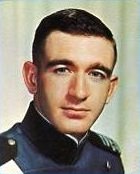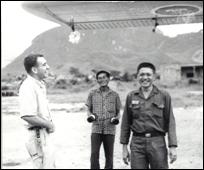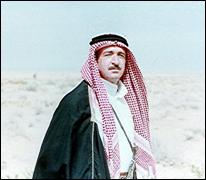
Ken Alnwick
Reflections of an Air Commando
My first exposure to Vietnam came as a MATS C-135 co-pilot in late 1962. Our job was to pick up a SF Team at Hurlburt Field and deliver them to Saigon by way of the Philippines. I was fascinated by what I saw and learned on that trip, and when a message came in to McGuire looking for people to fly obsolete aircraft in undisclosed locations, I was hooked.
On 20 Jun 1963, following a short training period at Hurlburt Field, FL, I arrived at Bien Hoa, SVN to join Andi Biancur there as a B-26 pilot with Det 2A of the 1st Air Commando Wing, code named Farm Gate. My nav, Capt. Miles Tanimoto, and I were assigned to fill a slot in the RB-26 program and soon began OJT in a new skill, low-altitude photo recce. Our aircraft was fitted with a variety of cameras and was also configured with a night photo capability consisting of multiple high intensity magnesium flares in the bomb bay. A photo technician sometimes rode back there as well. Our aircraft also had a glass nose compartment and after takeoff, Miles would leave the co-pilots seat and crawl into the nose to sit behind a 36 focal length camera to help aim the aircraft at our designated target. Some of our most interesting missions occurred when we would put a Special Forces platoon leader in the nose and fly him along a route he intended to follow the next day, looking for and photographing likely ambush sites. Of course, we would fly multiple routes to avoid tipping the VC as to the route to be taken, and sometimes took ground fire for our troubles.
We were supposed to be in Vietnam as advisors, and to preserve this fiction, we flew with a Vietnamese airman observer in the jump seat behind the copilot/navigator position. This was a cruel farce. The 18 year old airmen who flew with us were barely literate, spoke virtually no English, and had absolutely no access to either radios or flight controls. Their only role in life was to provide a cover story for us in the event we all died in a crash.
Not long after we arrived in country, our recce operation transferred to Tan Son Nhut AB, Saigon. The missions didn't change too much, at least in the beginning, but, on the plus side, I moved up from the tents and duckboards of Bien Hoa to a third-story apartment in Cholon, the Chinese section of town. I felt like a true soldier of fortune, living off my $14/day per diem, cruising the bars at night with my mates, and then taking a taxi out to the field each morning where I would take my 45 out of the safe and then traverse the skies over War Zone Charlie looking for the VC. Sometimes they found us first.
At times the action on the streets of Saigon was more exciting than in my airplane. I was in Saigon the night that Ngo Dinh Diem was assassinated, 1 November, 1963. The affair began earlier in the day, when Diems special police (the despised White Mice) began clearing the streets with automatic rifle fire and attempting to establish a perimeter around Diem's palace. Somehow, I found myself acting as an observer from the roof of the Brinks hotel, calling in to MACV the location of various VNAF aircraft over the city. As night fell, I retreated to my apartment in Cholon where Miles and I had some weapons stashed. The next morning, Diem was dead, and it was as if a great weight had been lifted from the city. Vietnamese and Buddhist flags flew side-by-side, and the despised White Mice were nowhere to be seen. This was a watershed moment in the war, and we blew it. Soon Generals Big Minh and Little Minh and a succession of US-backed non-entities provided a revolving door of corrupt and ineffective governments. Without reforms or effective leadership to rally the country, the war for the hearts and minds of the South Vietnamese was lost. Unfortunately, it took us more than a decade to realize that sad truth.
Following Diem's demise, in addition to our regular missions, we flew some experimental test flights to try out some night imaging and electronic navigation gear. It was not until a few years ago, when I was working on Secretary McLucas' biography, did I learn that these were probably the first precursor tests of infrared and tactical LORAN concepts under operational conditions. Not long thereafter, the wings started to fall off our B-26s, and we were sent home.

The joy of dropping smoke on Pathet Lao positions and returning in one piece
Four years later, I found myself once again in Saigon, this time on a summer TDY from the Academy, where Dick Sexton and I were teaching history. I was assigned to an outfit called CHECO (Contemporary Historical Evaluation of Combat Operations) working on command and control of close-air-support operations. This study effort took me up North to Quang Tri where I encountered Cres Shields flying as an OV-10 FAC. This led to one of the strangest missions of all. A US 9th Division tank up on Route 9 lost its tread while being overrun by NVN forces, and Cres got the call to destroy it. Soon we were getting calls from fighters throughout the theater looking for an opportunity to knock it out of commission. Tanks are pretty hard to kill with gravity bombs, and it took us about an hour before a 366th Wing Gunfighter F-4E out of Da Nang finally did the job with hi-drag 500lb bombs. I often wondered how 7AF reacted to Cres' BDA from that mission.
My last sojourn to the war zone came in 1972 as I took an accompanied advisory position with US MACTHAI in Bangkok. I was variously, an O-1/OV-10 FAC advisor, a Command and Control advisor and a MACTHAI HQ staff officer, and I regularly flew C-47 missions into SVN. This led to my getting a quasi- unaccompanied tour to Nakhon Phanom where I flew Scatback T-39s throughout the theater, primarily carrying high priority ISR products. Many of these missions were flown with TI Anderson from the Class of 59. We flew in and out of Saigon and Phnom Phen in the closing days of the war and watched helplessly from above as the defenses around the Cambodian capital crumbled. We were on the ground in Saigon the day that Bien Hoa went up in smoke and witnessed the aftermath of the tragic fall of Saigon in 1975--12 years after I had flown my first combat sortie in SEA.

Kenneth of Arabia